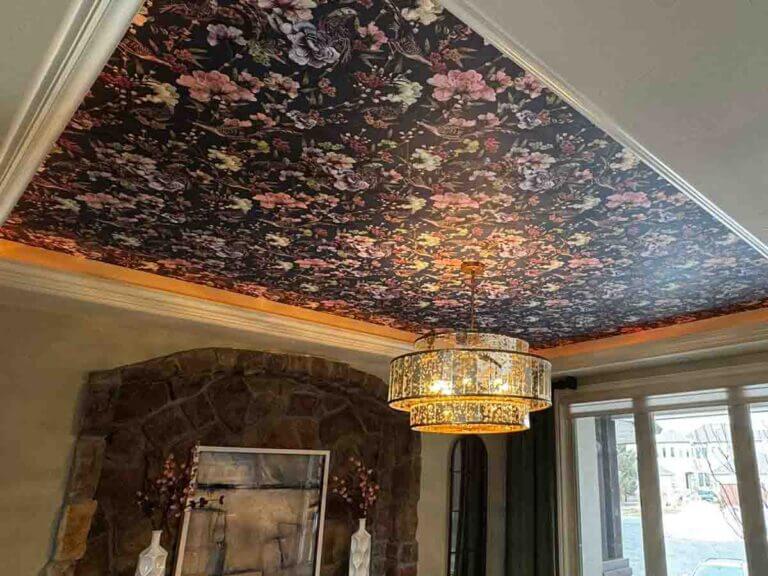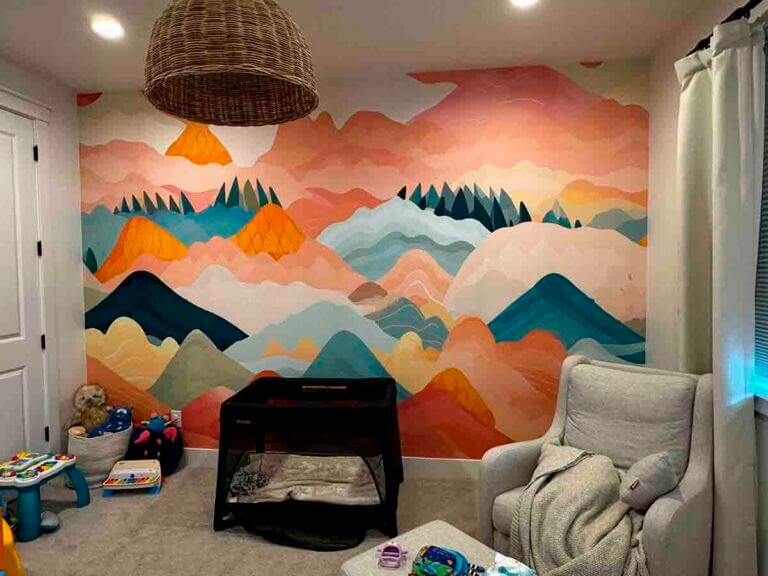Home » Wallpaper guide: Sizes, repeats & materials explained
Updated June 2025
If you’re planning to refresh your space, you’ve probably wondered how to choose wallpaper. At first glance, it seems simple — you like the design, buy it, and install it. But in reality, there are a lot of factors to consider: roll sizes, pattern matching, room type, and wall preparation. To avoid costly mistakes and wasted material, check out our guide for everything you need to know before making your purchase. We proudly serve the Denver metro area and all of Colorado with expert wallpaper advice and installation.




Table of Contents
ToggleRoll dimensions, repeat patterns, and wall condition all affect your final result. Getting these details wrong can cost you time and money.
Vinyl, paper, non-woven, and textile wallpapers behave differently and require different prep. That’s why we guide our clients through selection, sizing, and compatibility for every space.
In the US, people often confuse single roll and double roll.
Single roll refers to a measurement unit: typically 21″ x 16.5′ (about 0.53 m × 5 m).
Double roll is the actual roll most manufacturers sell: approx. 10 m long.
🔹 Always check if the price is per single or double roll. If priced by single, multiply by two for the full roll cost.
If you’re not careful, it’s easy to underestimate how much wallpaper you need. Always:
Calculate total square footage
Factor in pattern repeats and waste
🔗 For help, try our Wallpaper Calculator.
Wallpaper with a pattern includes a pattern repeat — the vertical distance between design elements.
2″ – 3″ (5–7 cm): small repeat, minimal waste
10″ – 20″ (25–50 cm): large repeat, more waste
📌 Larger patterns = more trimming. Order extra to avoid running out mid-project.
🔗 Learn more: The Importance of Properly Preparing Walls Before Wallpaper Installation
Wallpaper isn’t just about looks. It must fit the room’s usage and humidity:
Kids’ rooms: eco-friendly and washable wallpaper
Bathrooms: use moisture-resistant vinyl
Living rooms: designer or textured types
Laundry rooms: durable finishes
🔗 Related: Can You Put Wallpaper on Textured Walls? • Wallpaper Installation Near Me
Choose the right type based on surface condition and experience:
Paper — lightweight, needs smooth walls
Vinyl — thick, hides flaws, heavier
Non-woven — easy install, flexible
Textile — premium, requires clean conditions
🔗 Read more: Wallpapered Ceiling Ideas
Expensive wallpaper often requires:
Smoothing
Priming
Careful trimming
Cheaper materials may work on painted walls but still need preparation. Don’t skip this step.
We use only premium-quality wallpaper from trusted manufacturers:
Our materials are durable, color-stable, and perfect for high-traffic areas across Colorado.
Enjoy The Wall installs and advises on wallpaper throughout the state, with a focus on the Denver metro area:
Denver
Aurora
Lakewood
Centennial
Castle Rock
Boulder
Colorado Springs
👉 Want to see if we serve your city? Check our full Service Area list.
It’s sold in double rolls, but sometimes priced per single roll.
Yes — larger repeats require more material.
Consider non-woven or vinyl options, or have walls prepared professionally.
Choosing the right wallpaper starts with good guidance. Whether you’re updating one wall or an entire home, our Denver metro area team will ensure it’s done right.